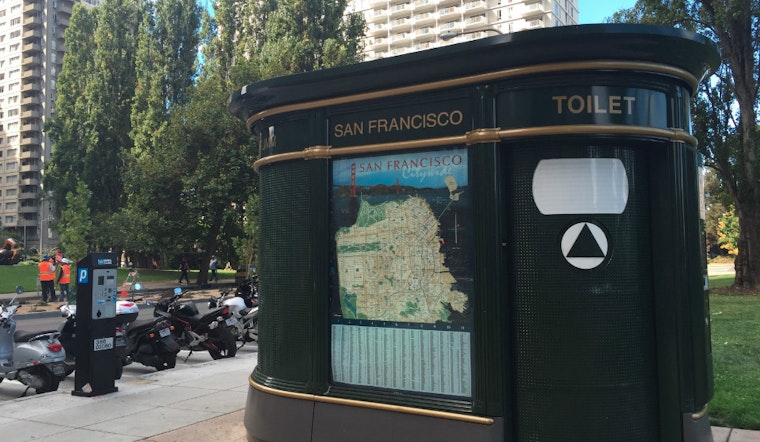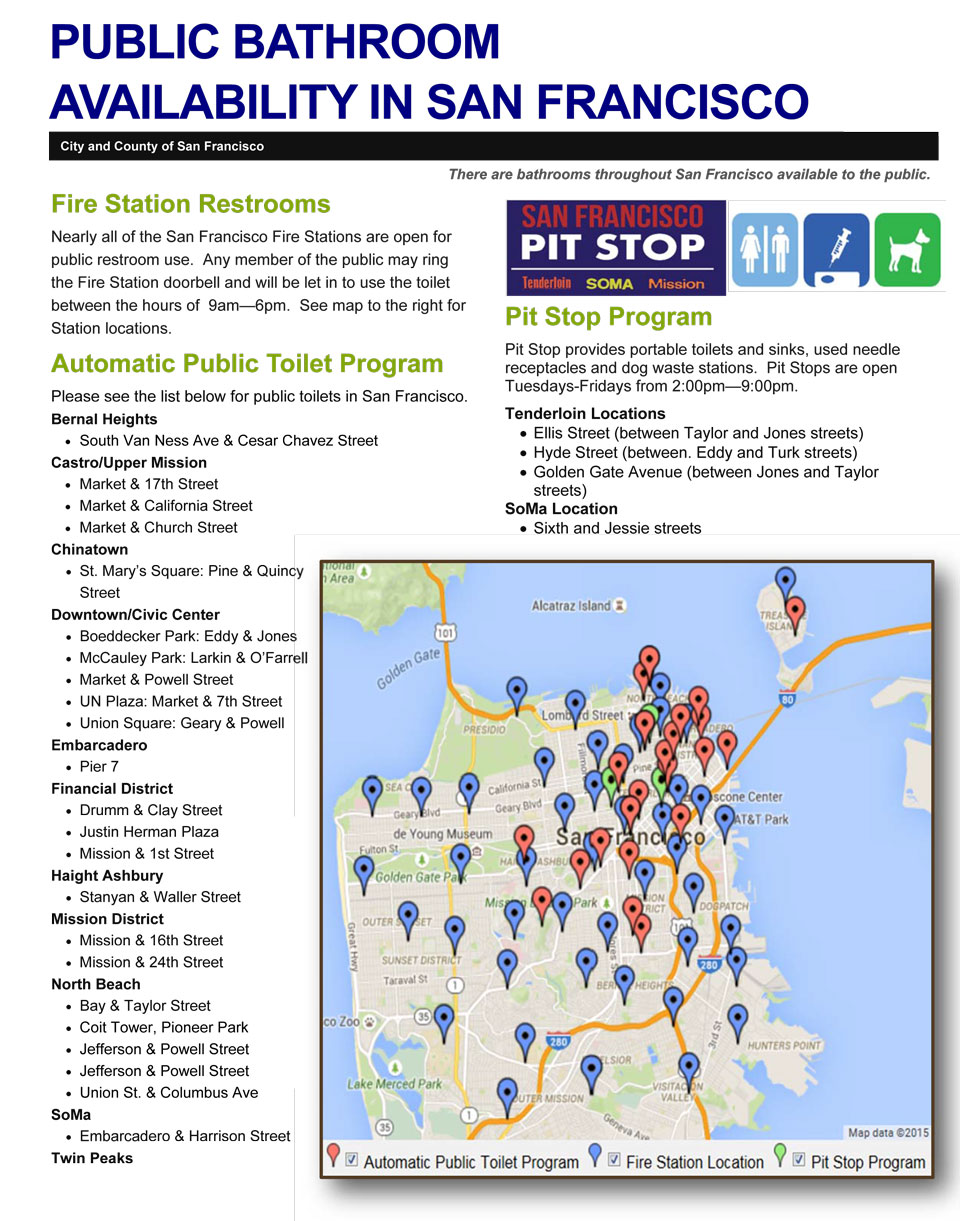
In an effort to make the city cleaner and friendlier, District 6 Supervisor Jane Kim is asking the city to look at ways to expand the Pit Stop program to make more public restrooms usable.
"It’s not just [for the] homeless," said Kim's legislative aide, Ivy Lee. "This is actually for everyone: tourists, everyone who comes to San Francisco. They should be able to use a clean and safe public bathroom."
Pit Stop began as a pilot program in the Tenderloin in July 2014, with three locations. It's now in the Castro, Civic Center, Mid-Market, Mission and SoMa as well. It provides toilets, sinks, used needle receptacles and dog waste stations, all monitored by attendants.
Pit Stop encompasses both portable toilets, trucked to and from the sites daily after overnight servicing at a remote location, and the semi-permanent JCDecaux self-cleaning toilets (the green kiosk style toilets seen throughout the city, including the FiDi, Civic Center, North Beach and Union Square).
"Instead of complaining about all of this poop and pee, let’s ask them to activate what we already have," Lee said, explaining that Kim wants to expand Pit Stop across even more of the JCDecaux toilets, along with public restrooms in parks, senior centers and elsewhere. (Blogger and mayoral candidate Michael Petrelis is also calling for more people to take advantage of SF Fire Department bathrooms, but this program wouldn't include those.)

Hiring attendants is key to helping the restrooms stay cleaner, which means they'll be used more often, Lee said. After the city began staffing the JCDecaux toilet at UN Plaza, flushes went from 50 a day to more than 100. Many of the Heart of the City farmer's market vendors now use that restroom. "We know that staffing the public restrooms works. Japan and Taiwan do this already, and they have these amazing public restrooms. They’re super safe, they’re super clean, and everyone uses them, from families to tourists."
"There is a clear demand for these facilities across San Francisco," Kim wrote in a statement. "On average, almost 100 people per day use the three Pit Stops in the Tenderloin. In July alone, the three Pit Stops in District 6 were used over 4,500 times. The results speak for themselves: over 2,400 gallons of water saved per month with just our three Pit Stops in District 6. Reduction in steam cleaning requests by 60%. These facilities have also made our streets cleaner, with over 120 bags of garbage collected at these three sites."
Kim recently asked the Controller's office to work with SF Public Works and SF Recreation and Parks to develop proposals and options for expanding the Pit Stop program citywide. Lee said Kim asked for a proposal to be prepared by mid-October and for a public hearing to be held. They're currently gathering public input and information on "hot spots" for placement; you can send your comments or pleas for a Pit Stop near you to jane [dot] kim [at] sfgov.org.
We asked how the city would pay for attendants, and whether they'd be city employees or contractors. Currently, the city contracts the nonprofit San Francisco Clean City Coalition. "They actually hire people who are re-entering the work force," Lee said, and might have a hard time getting a job elsewhere. The program could possibly even pay for itself, given the water savings from fewer steam-cleaning requests.
We also asked if residents will be amenable to having Pit Stops in their neighborhoods. "We’ve gotten a lot of feedback that people want the Pit Stop in their neighborhood because they’re tired of smelling pee and stepping over poop," Lee said. "Let’s try this. What we’re doing now isn’t working.”









